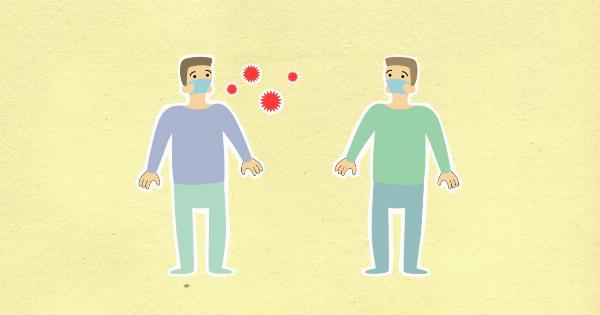The world is currently facing a severe and deadly flu outbreak that has impacted numerous cities across the globe.
This highly contagious virus has caused widespread panic and concern for public health officials as they scramble to contain its rapid spread. With increasing numbers of affected individuals, hospitals are overwhelmed, and communities are living in fear of the flu’s devastating consequences.
The Origin of the Outbreak
The origins of this deadly flu outbreak can be traced back to a mutation in the virus that enabled it to become more virulent and easily transmissible between humans.
While the specific location of the outbreak’s origins remains unknown, it is believed to have emerged in densely populated areas with significant international travel, creating the perfect conditions for rapid transmission.
The Rapid Spread
Once the flu outbreak took hold, its spread was alarmingly fast. Infected individuals unknowingly transmitted the virus to others around them before they even showed symptoms.
This unique characteristic of the virus contributes to its rapid dissemination and explains why it has become so challenging to contain.
With the increased ease of global travel, the virus quickly spread beyond its initial epicenter, infiltrating cities worldwide.
Major international airports, bustling transportation hubs, and crowded public spaces have all played a significant role in exporting the virus to vulnerable communities across the globe.
The Toll on Health Systems
The deadly flu outbreak has put immense strain on healthcare systems in affected cities. Hospitals and clinics have been overwhelmed with patients exhibiting flu-related symptoms, causing long wait times and inadequate care for many.
The shortage of medical personnel, equipment, and supplies has further exacerbated the situation, leaving healthcare providers struggling to cope with the influx of patients.
Moreover, the sheer volume of individuals seeking medical attention has resulted in a shortage of available hospital beds and resources.
This shortage not only affects those infected by the flu but also other patients who require urgent care for unrelated conditions. The strain on healthcare systems is causing a ripple effect, jeopardizing the overall well-being of communities.
Underpreparedness and Unpredictability
The world’s cities, caught off guard by the severity and rapid spread of this deadly flu outbreak, were ill-prepared to handle its devastating repercussions.
While public health officials frequently plan for outbreaks, the extent of this particular flu strain’s impact was unforeseen.
The unpredictability of viruses makes it difficult to produce effective vaccines in a timely manner.
Although scientists and researchers are working diligently to develop a vaccine specific to this deadly flu strain, the process takes time and cannot alleviate the immediate burden faced by cities.
The Economic Impact
Beyond the staggering toll on public health, the deadly flu outbreak has also severely impacted local and global economies.
Cities hit the hardest are experiencing a significant downturn in consumer spending, as fear and uncertainty discourage people from engaging in typical commercial activities.
Furthermore, businesses heavily reliant on tourism, such as hotels, restaurants, and entertainment venues, are suffering immense financial losses.
The widespread fear of contracting the flu has led to a sharp decline in tourism, depriving cities of a vital source of revenue.
The outbreak’s economic ramifications extend beyond the immediate impact on businesses. With an overwhelmed healthcare system and inevitable human casualties, productivity in the workforce diminishes.
Sick employees, overwhelmed caregivers, and grieving families find it difficult to maintain their usual level of productivity, negatively affecting economic output.
Citywide Measures and Lockdowns
In an attempt to contain the deadly flu outbreak, cities hit the hardest have implemented drastic measures, including strict lockdowns and travel restrictions.
These measures aim to limit the virus’s transmission, but they come at a substantial cost to daily life and individual freedoms.
Lockdowns force people to stay indoors, limiting social interactions and decreasing the potential for virus transmission. However, the social and psychological toll of isolation is palpable.
Mental health issues, such as anxiety, depression, and loneliness, are on the rise as individuals are cut off from their usual support systems.
Additionally, businesses and workers in industries adversely affected by lockdowns face significant challenges. Without customers and revenue, many businesses are forced to close permanently, and employees find themselves without a livelihood.
Effects on Vulnerable Populations
While the deadly flu outbreak affects individuals of all ages, certain populations are particularly vulnerable to severe illness and complications.
The elderly, individuals with underlying health conditions, pregnant women, and young children face a higher risk of developing severe symptoms if infected with the virus.
Cities have implemented targeted measures to protect these vulnerable populations. Nursing homes, for instance, have become hotspots for outbreaks, leading to strict regulations on visitors, increased testing, and enhanced infection control protocols.
Pregnant women are also being closely monitored, as the virus may pose significant risks to both mother and unborn child.
Communal Resilience and Support
Amid the devastating consequences of the deadly flu outbreak, cities have rallied together to provide support and assistance to their communities.
Volunteer organizations, non-profits, and charitable individuals have stepped up to help vulnerable populations with essential needs, such as food, medications, and emotional support.
Communities have come together to implement public health initiatives and education campaigns, emphasizing the importance of hygiene practices, social distancing, and vaccination.
The united front against the flu outbreak demonstrates the resilience and determination of city dwellers to protect their communities and weather the storm together.
Hope on the Horizon
Despite the severity of the current deadly flu outbreak, there is hope on the horizon. Scientists and researchers are tirelessly working towards developing an effective vaccine capable of combatting this devastating virus.
While it will take time to distribute the vaccine globally and reach the entirety of the population, it is a critical step towards curbing the outbreak’s impact.
It is important for cities and individuals to remain vigilant in practicing preventive measures, such as regular handwashing, wearing masks, and following public health guidelines.
By taking collective action and prioritizing public health, communities can mitigate the spread of the virus and minimize its devastating effects.
In Conclusion
The deadly flu outbreak has inflicted unprecedented damage on cities worldwide, overwhelming healthcare systems, devastating economies, and disrupting daily life.
The rapid spread of the virus and its unpredictable nature have caught cities off guard, highlighting the need for robust preparedness measures.
While the current situation may seem dire, the resilience and collective efforts of cities can make a significant difference.
By prioritizing public health, supporting vulnerable populations, and working together, cities can overcome the deadly flu outbreak and emerge stronger, more prepared, and more united.






























